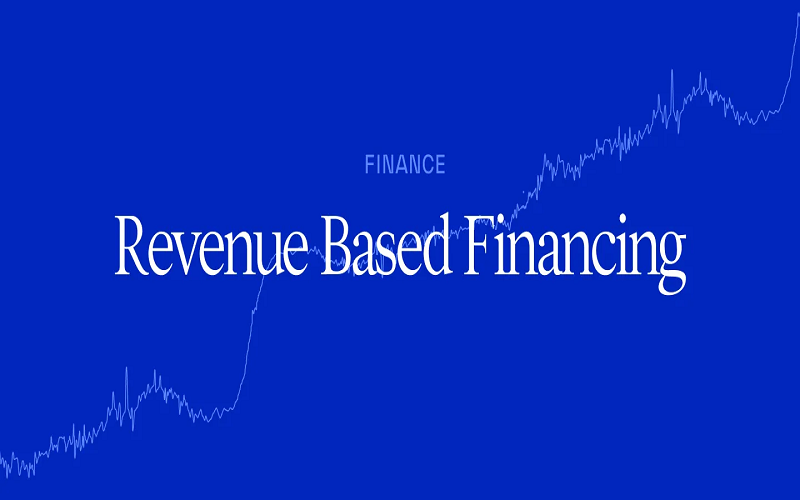Imagine having access to capital without the burden of traditional loans or giving up equity. Revenue based funding (RBF) is revolutionising how UK businesses secure financing. Instead of fixed repayments, you repay a percentage of your monthly revenue, making it a flexible option that aligns with your business performance.
Whether you’re a startup looking to scale or an established company seeking growth, RBF offers a bespoke solution. It’s particularly appealing in uncertain economic climates, as repayments adjust with your revenue flow. Dive into why more UK businesses are turning to this innovative funding model and how it could be the perfect fit for your financial needs.
What Is Revenue Based Funding?
Revenue based funding (RBF) lets businesses repay loans based on a percentage of monthly revenue. This offers flexibility, aligning repayments with business performance. For startups, RBF can provide a bespoke solution to manage scaling during economic uncertainty.
The Basics of Revenue Based Funding
In RBF, you receive funding in exchange for a share of future revenue. Unlike traditional loans, there’s no fixed repayment schedule. You pay more when your business does well and less when it doesn’t. This is great if you prefer avoiding the pressure of fixed repayments.
Key components include:
- Revenue Share: A pre-agreed percentage of monthly revenue.
- Capital: An upfront lump sum to support business growth.
- Term: Duration over which repayments are made.
For example, if your revenue dips, repayment amounts decrease, ensuring cash flow isn’t strained. It’s a straightforward yet flexible funding model.
How It Differs From Traditional Funding Models
Traditional loans typically involve fixed monthly payments and interest rates. In contrast, RBF adapts to your business fortunes. This makes it ideal for fluctuating revenues.
Key differences:
- Repayment Structure: Fixed vs percentage based.
- Flexibility: RBF adjusts with business performance while traditional models don’t.
- Risk: RBF lenders share the risk, incentivising them to support your business.
Ever considered an unsecured business loan? They require no collateral but come with fixed terms. RBF offers a tailored fit, especially if you want repayment flexibility linked to revenue flow. This distinction makes RBF appealing for diverse financial needs.
Advantages of Revenue Based Output
Revenue based funding (RBF) offers several compelling advantages for businesses. These make it an appealing alternative to traditional funding options, particularly in the UK.
Flexibility in Repayment
Flexibility in repayment takes centre stage with RBF. Repayments adjust according to your business revenue. If your business experiences a slow month, your repayments reduce; conversely, during a strong month, repayments increase. This mechanism allows your business to navigate seasonal fluctuations and economic uncertainties with ease. Sounds good, right? This arrangement contrasts starkly with unsecured business loans where fixed monthly repayments might strain your cash flow during lean periods.
Minimal Dilution for Owners
Minimal dilution for owners is another major perk. With RBF, you don’t give away chunks of your company to investors. Traditional equity-based funding often requires giving up ownership stakes, but RBF keeps control firmly in your hands. You maintain your vision and decision-making power without diluting your stake. Fancy staying the captain of your ship? RBF enables you to do just that.
Both these features make RBF an attractive avenue compared to the rigidity of unsecured business loans. It’s tailor-made for businesses looking to retain control while enjoying adaptive financial support. How does your current funding strategy stack up? Perhaps it’s time for a change. By leveraging revenue based funding, you align your financial obligations directly with your business performance, offering a more dynamic and owner-friendly economic path.
Disadvantages of Revenue Based Funding
You might think revenue based funding (RBF) sounds like a brilliant idea after hearing about its perks. But hang tight, it comes with a few downsides you need to consider.
Higher Costs Over Time
RBF can be pricier in the long run. Unlike unsecured business loans where you repay a fixed amount plus interest, with RBF, you’re paying a percentage of your revenue. This can add up. Imagine your business is booming, and suddenly you’re handing over a bigger chunk of your profits. That could bite!
For instance, if a business grows steadily, those monthly payments, based on revenue share, can surpass the costs of traditional loans. So, think about this – you’d possibly end up paying more overall than with a conventional business loan.
Suitability for Certain Business Types
Not all businesses are a match made in heaven for RBF. This type of funding works well for ventures with predictable, recurring revenue. If your income’s erratic, relying on peak seasons or you’re in a high-risk industry, RBF might not be your best bet. Think about it, variable revenue could mean fluctuating payment amounts that can complicate financial planning.
Moreover, if your business needs a hefty upfront injection but anticipates low initial revenue, RBF may pinch those meagre earnings too tightly. This approach contrasts with unsecured business loans that give predictable repayment schedules, allowing for more controlled planning. So, have you considered if your business earnings rhythm suits this financing type? It’s crucial to weigh these factors before diving in.
Key Industries That Benefit From Revenue Based Funding
Revenue based funding (RBF) isn’t for every business, but some sectors stand to gain significantly. Let’s dive into the key industries reaping substantial benefits from this innovative financing option.
Technology Sector
The technology sector thrives on rapid innovation and scalability. With RBF, tech companies get the capital they need without giving up equity or resorting to unsecured business loans. Imagine you run a software-as-a-service (SaaS) business. Your revenues grow fast, and RBF aligns payments with your income stream, easing cash flow pressures. If sales dip one month, payments decrease, minimising your financial strain. Interactive tools and platforms like app development, cybersecurity, and digital solutions flourish because RBF provides the necessary capital to stay competitive and innovative.
E-Commerce Platforms
E-commerce platforms have seen explosive growth, especially with the rise of online shopping. Traditional loans often have rigid terms, but RBF flexes with your revenue, making it perfect for this sector. Running an e-commerce platform means dealing with seasonal peaks and valleys, right? With RBF, you repay more during high sales periods and less when sales slow down, maintaining financial equilibrium. Businesses selling products online, whether it’s fashion, electronics, or niche goods, benefit from RBF as it provides the working capital needed for inventory management, marketing, and operational expansion.
This dynamic funding solution helps these industries grow sustainably without the drawbacks of traditional financing methods. Feel like RBF might work for your business? Chat with a finance expert and explore your options.
In Finishing
Revenue based funding offers a dynamic and adaptable solution for UK businesses looking to scale without the rigid constraints of traditional loans. This financing model is particularly advantageous for industries like technology and e-commerce, where revenue streams can be unpredictable. By aligning repayments with your sales performance, RBF ensures you maintain cash flow flexibility, supporting your growth and innovation efforts. If you’re seeking a financing option that evolves with your business’s needs and market conditions, revenue based funding could be the strategic choice to drive your success.




